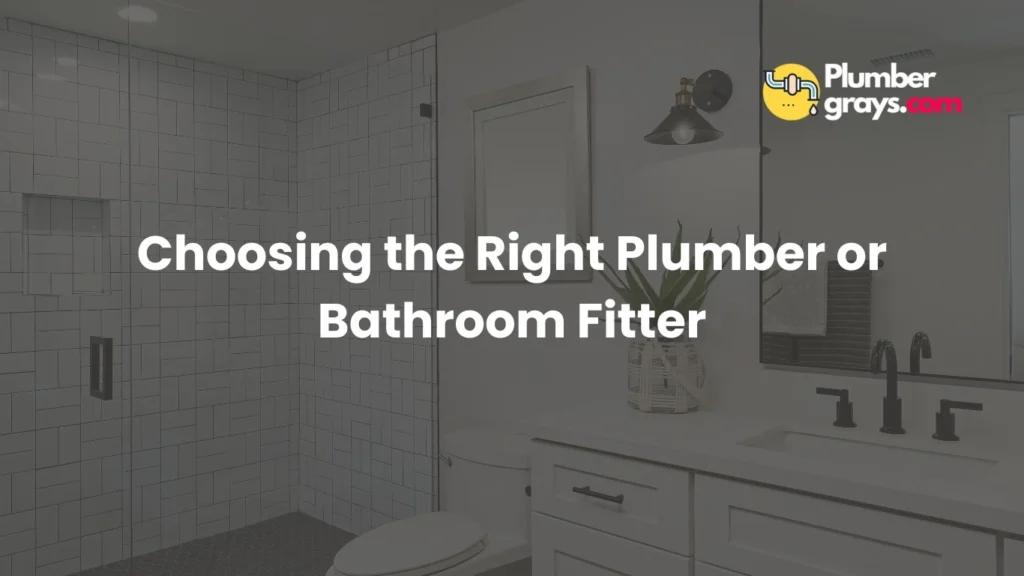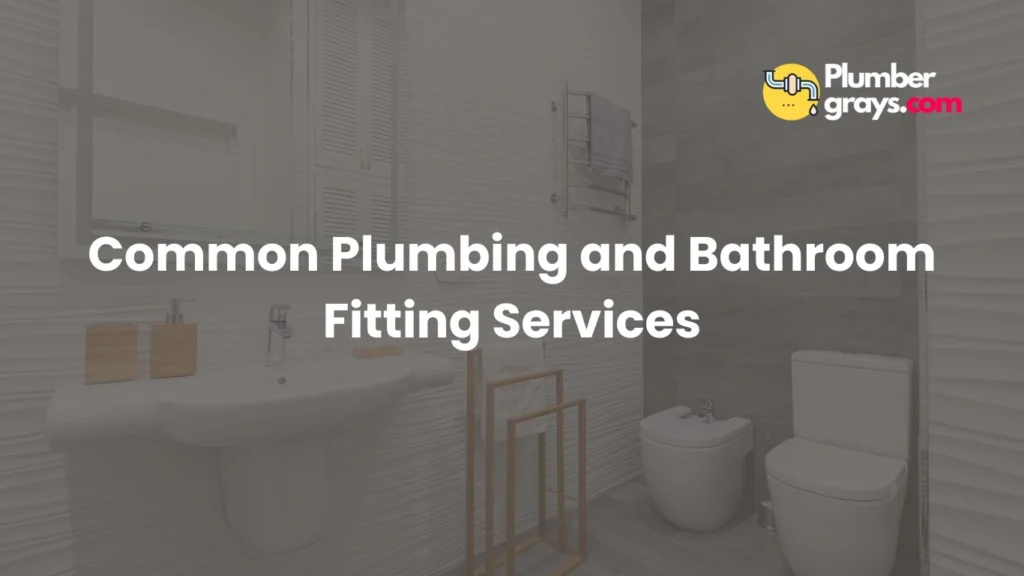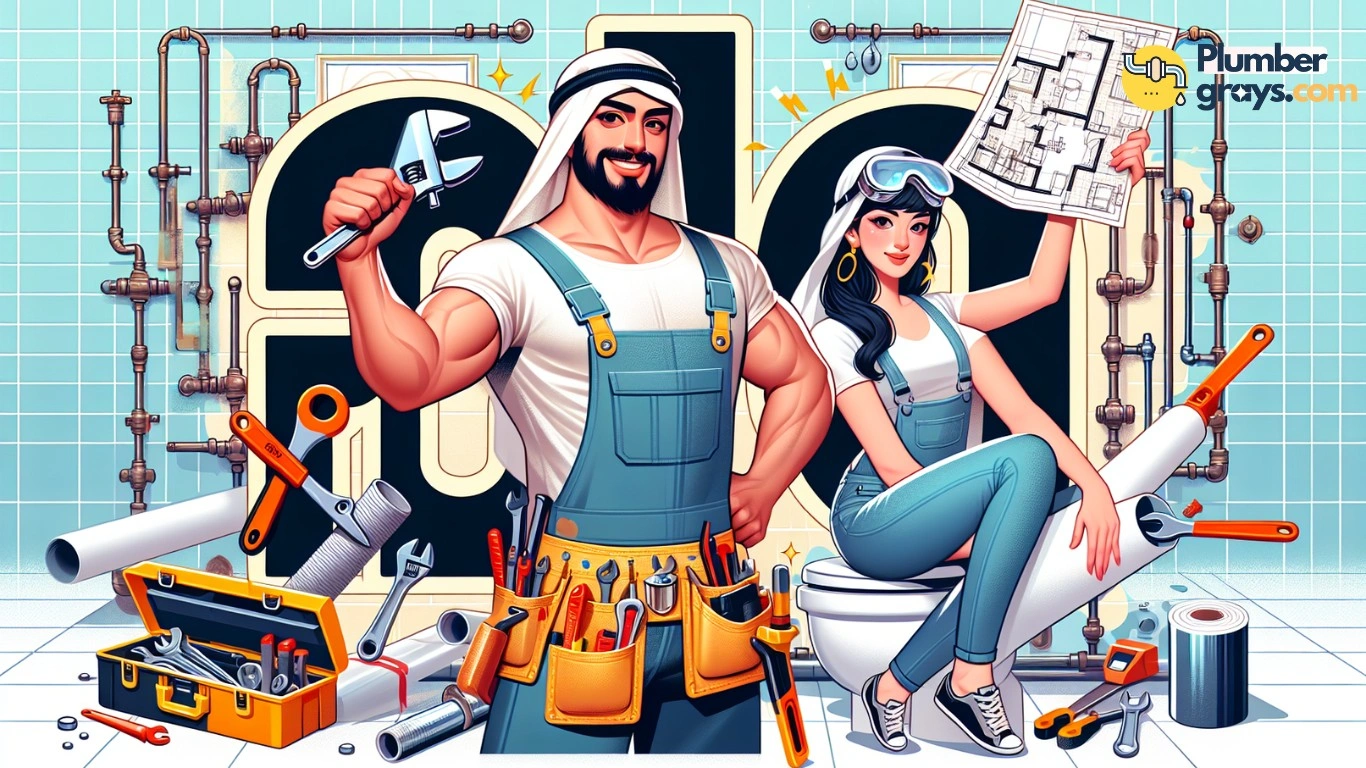Finding reputable plumbers and bathroom fitters is crucial for both routine maintenance and emergency repairs. Breen & Sullivan Mechanical Services stands out by offering a comprehensive range of plumbing and electrical services, including everything from HVAC to energy efficiency management[1]. Their expertise extends to residential, commercial, and industrial settings, ensuring round-the-clock emergency support[1].
The company is proficient in handling an array of tasks such as sanitary systems, water heaters, and pipe repair for homes, while their commercial services cover extensive needs including acid waste systems and certified medical gas installation[1]. This demonstrates the importance of choosing skilled bath fitters and plumbers for quality, efficient services[1].
Choosing the Right Plumber or Bathroom Fitter

Choosing the right plumber or bathroom fitter is a pivotal decision that can significantly influence the success of your plumbing or bathroom renovation project. Here are some key considerations to help streamline this process:
- Research and Recommendations:
- Utilize platforms like MyBuilder.com to read reviews on potential tradespeople.
- Ask family and friends for referrals and speak to past clients for firsthand experiences.
- Review the fitter’s portfolio, especially for projects similar to yours.
- Qualifications and Experience:
- Verify the plumber or fitter’s qualifications, ensuring they are licensed and insured.
- Check for specialization in bathroom fitting or plumbing, which might indicate higher expertise.
- Consider professionals who are experienced in both plumbing and bathroom fitting for comprehensive service.
- Costs and Communication:
- Obtain detailed quotes from at least three tradesmen, covering all aspects of the project including labor, materials, and disposal.
- Ensure clear communication about the project requirements to avoid misunderstandings.
- Beware of unusually low quotes, which may indicate a lack of experience or inadequate insurance coverage.
Remember, a professional plumber or bathroom fitter not only brings expertise and efficiency to your project but also ensures safety, and energy efficiency, and enhances the overall value of your home.
Common Plumbing and Bathroom Fitting Services

When it comes to maintaining the health, hygiene, and comfort of building occupants, the role of plumbers and bathroom fitters cannot be overstated. They are involved in the design, installation, and maintenance of systems that are essential for a functional and comfortable living space. Here’s a breakdown of common services offered by these professionals:
- Installation and Repair Services:
- Water supply systems and drainage systems installation and repair.
- Sanitary fittings including toilets, faucets, kitchen and bathroom sinks, tubs, showers, and leaky valves.
- Water heater maintenance to prevent sediment buildup and repairs for leaks or strange sounds.
- Gas pipe leak detection and appliance installation (stoves, fireplaces, ovens).
- Maintenance and Emergency Services:
- Regular drain cleaning to prevent clogging.
- Whole-home repiping for outdated plumbing systems.
- Emergency services for blocked drains, toilets, baths, showers, and outside drains.
- Hot water system repairs including gas and electric hot water systems.
- Specialized Services:
- Sewer maintenance including unclogging, video inspection, and addressing tree root intrusions.
- Water pressure issues, water filter, and pipe repairs.
- Installation services for sinks, showers, and mixer taps.
- Leak detection and repair, including water leaks and burst pipes.
These services underscore the importance of hiring skilled professionals for any plumbing or bathroom fitting needs, ensuring the longevity and efficiency of your home’s essential systems.
The Process of Bathroom Renovation
The process of bathroom renovation is a complex but rewarding endeavor that involves several critical steps to ensure a successful outcome. Initially, planning your installation is crucial. This includes:
- Creating a layout: Determine the most functional layout for your space.
- Determining pipe sizes: Essential for efficient water flow and drainage.
- Ensuring proper slope for drainage: Prevents water pooling and promotes hygiene.
Following the planning phase, the installation process unfolds in distinct phases:
- Underground Rough-In Phase: Laying out the foundational plumbing lines.
- Aboveground Rough-In Phase: Installing the pipes and drains that will be hidden behind walls and under floors.
- Finishing Phase: Installing fixtures, tiles, and final touches.
Before demolition starts, it’s vital to:
- Order necessary parts: Ensure all parts and pieces that cannot be obtained locally are ordered in advance.
- Plan to minimize backward steps: Organize the renovation to avoid redoing tasks and limit the spread of mess.
- Demolition and Preparation: Remove old fixtures and open walls for new installations, addressing any unexpected issues like mold or structural deficiencies.
This structured approach, from initial planning to the final touches, ensures a smooth renovation process, transforming your bathroom into a functional and aesthetically pleasing space.
Maintenance Tips for Your Plumbing and Bathroom
Maintaining your plumbing and bathroom in top condition not only ensures a comfortable living environment but also prevents costly repairs down the line. Here are essential tips to keep your systems running smoothly:
- Daily and Weekly Maintenance:
- Drains and Disposals: Clear buildup in drains with a weekly vinegar and baking soda mixture; avoid chemical cleaners.
- Faucets and Showerheads: Clean aerators and showerheads to remove sediment; fix leaks promptly.
- Toilets: Check for leaks; use food coloring in the tank to test the flush valve mechanism.
- Seasonal and Annual Checks:
- Water Heater: Flush annually to remove sediment; check for leaks and strange noises.
- Outdoor Fixtures: Drain and insulate hoses, faucets, and sprinkler systems before winter.
- Sewer Drains: Schedule professional inspections; older homes or those needing frequent repairs should consider annual checks.
- Tools, Materials, and Professional Help:
- Essential Tools: Keep a pipe cutter, wrenches, plumber’s torch, and thread sealing tape on hand.
- Professional Assistance: Don’t hesitate to call a local plumber for complex issues; create a preventive maintenance schedule and adhere to it.
By following these guidelines, you can ensure the longevity of your plumbing and bathroom fixtures, avoiding unexpected breakdowns and ensuring your home remains a comfortable sanctuary.
Conclusion
Throughout this article, we’ve explored the critical aspects of choosing and working with plumbers and bathroom fitters, underscoring the importance of expertise, qualifications, and the right approach to both selecting professionals and managing bathroom renovation projects. From the meticulous planning and execution required for a successful renovation to the essential maintenance tips that ensure the longevity and efficiency of your home’s plumbing systems, we’ve highlighted the key steps and considerations for homeowners. This comprehensive guide aims not only to inform but to empower readers with the knowledge needed to make informed decisions, ensuring both the functionality and aesthetic appeal of their living spaces.
The significance of engaging skilled professionals for plumbing and bathroom fitting tasks cannot be overstated, as it directly impacts the quality, safety, and value of your home. By adhering to the outlined considerations for selection, understanding the common services provided, and following through with the advised maintenance practices, homeowners can effectively navigate the complexities of plumbing and bathroom renovations. Furthermore, the encouragement towards ongoing maintenance underscores the article’s focus on not just creating, but sustaining high-quality living environments. Ultimately, this article serves as a foundational guide for ensuring the successful execution of plumbing and bathroom projects, enhancing both the immediate comfort and the long-term value of your home.
FAQs
Understanding the Roles of Plumbers and Bathroom Fitters
Q: Do bathroom fitters and plumbers perform the same tasks?
A: No, they have different roles. Plumbers are responsible for the plumbing system, including managing pipework and connections. Bathroom fitters specialize in the installation of bathroom components such as bathtubs, toilets, and sinks.
Hiring a Bathroom Fitter
Q: What should I inquire about when choosing a bathroom fitter?
A: When selecting a bathroom fitter, consider asking the following questions:
- What will the total cost be?
- How long will the remodeling process take?
- Can you provide personal references?
- Do you hold a valid license?
- Are you insured?
- Have you received any special awards?
- How many years have you been in business?
- Who will be present at my home daily during the project?
The Role of a Bathroom Fitter
Q: What are the responsibilities of a bathroom fitter?
A: A bathroom fitter is tasked with installing and maintaining bathroom fixtures and equipment, such as toilets, showers, bathtubs, sinks, and vanities. They ensure the installation aligns with the design plan and that all components function correctly and adhere to local building codes.
Interesting Facts About Plumbing
Q: Can you share some fascinating facts about plumbing work?
A: Plumbing dates back to ancient civilizations. Around 1700 B.C., the first known plumbers created a sewage disposal and drainage system, as well as the first flush toilet, in Crete, Greece.


Comments are closed